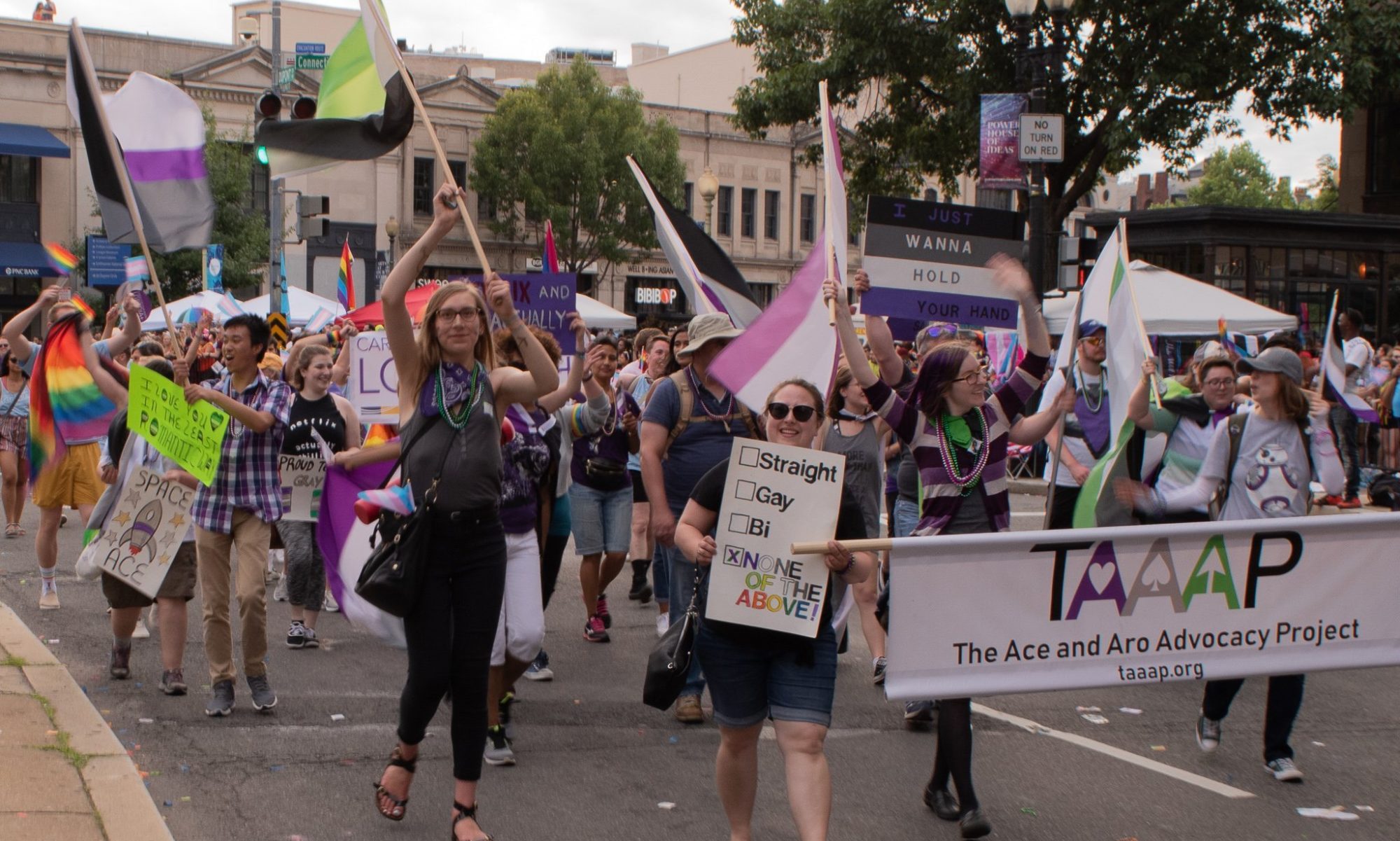From the Creating Change 2019 Program:
Welcome to Creating Change, and thank you for taking the time to learn about people on the asexual and aromantic spectrums — or ace and aro people for short. Ace and aro erasure and invisibility are still incredibly common; together, we can work to demonstrate inclusion and support. By reading this etiquette guide, you are taking the first step in that direction.
Asexuality is a sexual orientation where a person experiences little to no sexual attraction to anyone and/or does not experience desire for sexual contact. Asexuality is a spectrum, and there are some people who may not fit the strictest definition of the word asexual but feel their experience aligns more with asexuality than with other sexual orientations. Some identities that describe this experience include:
- Gray-asexual (or graysexual): an orientation where a person experiences sexual attraction rarely, only under specific circumstances, without any accompanying sex-drive, or in some other conditional way.
- Demisexual: an orientation where a person can only experience sexual attraction if a strong emotional bond is present. Demisexuality is often considered a type of gray-asexuality.
Many ace people also identify with a romantic orientation. Experiencing a lack of sexual attraction does not necessarily mean a person does not feel romantic feelings towards others. Romantic attraction is distinct from sexual attraction, as it does not inherently involve a desire to engage in sexual activity with another person. Romantic orientations describe this attraction to others based on gender, and there is a corresponding romantic orientation for each sexual orientation. Examples include aromantic, biromantic, homoromantic (or gay/lesbian), heteroromantic, and panromantic.
Aromanticism is a romantic orientation where a person experiences little to no romantic attraction and/or has no desire to form romantic relationships. Like asexuality, it exists on a spectrum which involves a range of identities characterized by varying levels of romantic attraction. This spectrum is called the aromantic spectrum, and it includes identities such as grayromantic and demiromantic, which have similar meanings to their counterparts on the asexual spectrum. Aro people can identify with any sexual orientation along with their aro identity, or they may just identify as aro.
Please Do:
- Acknowledge that asexuality and aromanticism exist and that they are legitimate identities.
- Include asexuality and aromanticism when talking about sexual orientations.
- Question assumptions that sex and romantic relationships are inherently good for all people, and that they always should go together.
- Recognize that ace and aro identities often overlap with other queer identities.
- Respect ace and aro people’s ways of being intimate and of forming relationships as valid and important, even if they do not include sex or romance.
Please Do Not:
- Assume aro people are emotionless or that they cannot love. Aro people still have rich emotional lives and often form significant non-romantic relationships with other people.
- Confuse asexuality with celibacy. Asexuality is an orientation and celibacy is a behavior, so ace people might have sex despite not experiencing sexual attraction.
- Ask an ace person about their sexual activity or sexual history in ways you would not ask other people.
- Ask an ace or aro person if they have “just not met the right person yet”, or if they are in the closet about being lesbian/gay.
According data collected by the Asexual Community Survey*, approximately one in three ace people are transgender, non-binary, or gender non-conforming in some way. In addition, the survey found that 51% of aces identify as being somewhere on the aromantic spectrum and that 38% of aces identify as biromantic, panromantic, or both.
*Source: The Ace Community Survey (2016), a large-scale survey of the ace community by The Ace Community Survey Team (N=9,331 aces)
